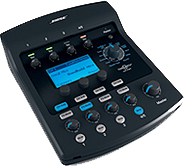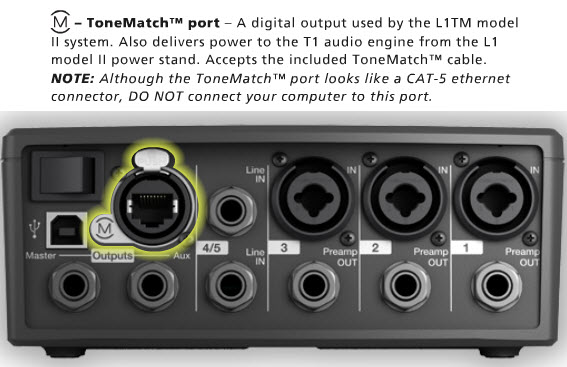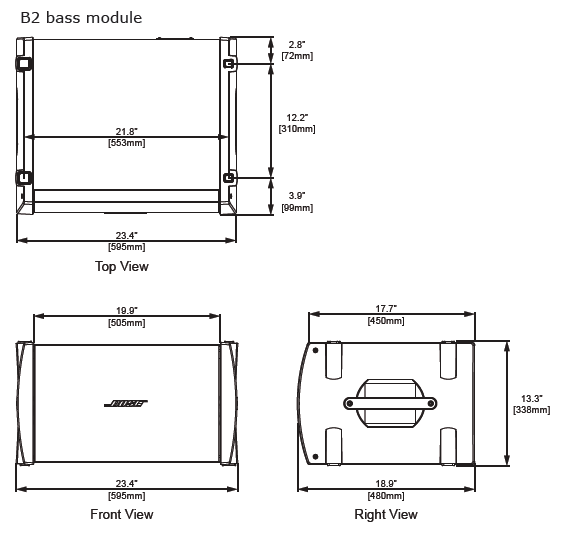Difference between revisions of "Template:Structured Data"
m |
m |
||
| (9 intermediate revisions by the same user not shown) | |||
| Line 3: | Line 3: | ||
.structuredData {display:none} | .structuredData {display:none} | ||
</style> | </style> | ||
| − | <section id="overview" class=" | + | <section id="overview" class="structuredData"> |
<h2>Overview of this site</h2> | <h2>Overview of this site</h2> | ||
<div itemscope itemtype="http://data-vocabulary.org/organization"> | <div itemscope itemtype="http://data-vocabulary.org/organization"> | ||
This is the home of <span itemprop="description">Unofficial FAQs Guides for | This is the home of <span itemprop="description">Unofficial FAQs Guides for | ||
<span itemprop="name"> | <span itemprop="name"> | ||
| − | <span itemprop="manufacturer" itemtype="http://schema.org/Organization">Bose | + | <span itemprop="manufacturer" itemtype="http://schema.org/Organization">Bose</span> |
| − | <span itemprop="model">Portable | + | <span itemprop="model">L1® Portable Systems</span> Users and Performers. |
| − | + | </span> | |
<span itemprop="description"> | <span itemprop="description"> | ||
| + | There are </html>[[Special:Statistics|{{NUMBEROFARTICLES}}]]<html> articles for you all related to using and performing with the <span itemprop="brand">Bose</span> L1® Portable Systems for Performers and Owners | ||
| + | <br /> | ||
</html> | </html> | ||
{{Main Page Guides}} | {{Main Page Guides}} | ||
<html> | <html> | ||
| + | |||
<br><a href="https://plus.google.com/u/0/b/107245793735606513393/" rel="publisher">Google+</a> | <br><a href="https://plus.google.com/u/0/b/107245793735606513393/" rel="publisher">Google+</a> | ||
</span> | </span> | ||
<br> | <br> | ||
</div> | </div> | ||
| + | </section> | ||
| + | <section id="products" class="structuredData"> | ||
| + | |||
| + | <span itemscope itemtype="http://schema.org/Product"> | ||
| + | <a itemprop="url" href="http://toonz.ca/bose/wiki/index.php?title=L1%C2%AE_Model_II"> | ||
| + | <span itemprop="name"> | ||
| + | <span itemprop="manufacturer" itemtype="http://schema.org/Organization">Bose L1®</span> | ||
| + | <span itemprop="model">L1® Model II</span> | ||
| + | </span> | ||
| + | </a> | ||
| + | <time itemprop="releaseDate" datetime="2012-09-27">September 27, 2012</time> | ||
| + | </span> | ||
| + | |||
| + | <span itemscope itemtype="http://schema.org/Product"> | ||
| + | <a itemprop="url" href="http://toonz.ca/bose/wiki/index.php?title=L1%C2%AE_Model_1S"> | ||
| + | <span itemprop="name"> | ||
| + | <span itemprop="manufacturer" itemtype="http://schema.org/Organization">Bose L1®</span> | ||
| + | <span itemprop="model">L1® Model 1S</span> | ||
| + | </span> | ||
| + | </a> | ||
| + | <time itemprop="releaseDate" datetime="2012-09-27">September 27, 2012</time> | ||
| + | </span> | ||
| + | |||
| + | <span itemscope itemtype="http://schema.org/Product"> | ||
| + | <a itemprop="url" href="http://toonz.ca/bose/wiki/index.php?title=B2"> | ||
| + | <span itemprop="name"> | ||
| + | <span itemprop="manufacturer" itemtype="http://schema.org/Organization">Bose L1®</span> | ||
| + | <span itemprop="model">B2 Bass Module</span> | ||
| + | </span> | ||
| + | </a> | ||
| + | <time itemprop="releaseDate" datetime="2012-09-27">September 27, 2012</time> | ||
| + | </span> | ||
| + | |||
| + | <span itemscope itemtype="http://schema.org/Product"> | ||
| + | <a itemprop="url" href="http://toonz.ca/bose/wiki/index.php?L1®_Compact"> | ||
| + | <span itemprop="name"> | ||
| + | <span itemprop="manufacturer" itemtype="http://schema.org/Organization">Bose L1®</span> | ||
| + | <span itemprop="model">Compact</span> | ||
| + | </span> | ||
| + | </a> | ||
| + | <span itemprop="releaseDate">April 1 2009</span> | ||
| + | </span> | ||
| + | |||
| + | </html>{{Model II Structured Data}}<html> | ||
| + | </html>{{Model I Structured Data}}<html> | ||
| + | </html>{{T1 Structured Data}}<html> | ||
| + | </html>{{Compact Structured Data}}<html> | ||
| + | </html>{{B2 Structured Data}}<html> | ||
</section> | </section> | ||
</html> | </html> | ||
Latest revision as of 17:37, 17 December 2012
Overview of this site
- Users Guide - Owner contributed knowledge
- Performers Guide - Quick Start for Non-Owners
- Different Models (What do I have?)
 Downloads ← New owners - make sure your equipment is up to date!
Downloads ← New owners - make sure your equipment is up to date!- Application Notes (Solo, Duo, Ensemble, DJ, Jam Session and more)
- The Sketcher Stage layout tool
Bose L1® Model II
URL http://worldwide.bose.com/pro/en_us/web/l1_model2/page.html
Release Date: 2007-03-29
Height: 84 inches
Weight: 84 pounds (includes B1)
Power Stand Depth:27.2 inches
Power Stand Width:26 inches
Description: FAQ, documentation, hints and tips for owners of the L1® Model II
Description:
Key Features
High-performing, powered, portable two-way loudspeaker system with a 195° H x 0° V nominal dispersion designed for the production and reproduction of live music, music playback, speeches and A/V sound reproduction
24-driver articulated line array loudspeaker technology produces wide, uniform sound coverage throughout the entire listening area—even off to the extreme sides
Consistent front-to-back coverage, 24 drivers mounted in a vertical line array produce little drop in sound pressure level per doubling in distance than a conventional point source
Retractable folding leg mechanism for easy transport
Lightweight, interlocking components
Expandable bass design supports the use of multiple B1 bass modules or a single B2 bass module
Digital Ethercon port provides single-wire connectivity for the T1 ToneMatch audio engine
Physical
Enclosure
Power Stand: Polypropylene cover with cast aluminum legs and steel chassis base
Cylindrical Radiator: Aluminum enclosuure with ABS baffle
Dimensions
Assembled height: 84.0" (2134 mm)
Net Weight
Power Stand: 23.7 lb (10.7 kg)
Cylindrical Radiators (pair): 33.7 lb (15.3 kg)
B1 bass module: 26.6 lb (12.1 kg)
B2 bass module: 45 lb (20.41 kg)
Color
Black
Package Contents
1 system
Bose L1® Model I
URL http://worldwide.bose.com/pro/en_us/web/l1_model1/page.html
Release Date: 2007-03-29
Height: 82.5 inches
Weight: 97 pounds (includes B1)
Power Stand Depth:26 inches
Power Stand Width:26 inches
Description: Bose Spatial Dispersion™ system technology delivers sound evenly across the stage and throughout the audience. The L1 Model I and L1 Model II systems project sound waves forward and to the sides at nearly 180 degrees and with little vertical dispersion, reducing unwanted room reverberation. Amplified sound is spread more evenly across the stage and into the audience. The volume level drops off much more slowly than with a conventional speaker.
Description: High-performing, powered, portable two-way loudspeaker system with a 160° H x 0° V nominal dispersion designed for the production and reproduction of live music, music playback, speeches and A/V sound reproduction
Spatial Dispersion™ loudspeaker technology produces wide, uniform sound coverage throughout the entire listening area—even off to the extreme sides
Consistent front-to-back coverage, 24 drivers mounted in a vertical line array design produce a loss of only 3 dB in sound pressure level per doubling in distance
Integrated ToneMatch® presets for popular vocal microphones and instruments
Integrated 4-channel mixer with wired remote control
Lightweight, interlocking components for easy transport
Expandable bass design supports the use of multiple B1 bass modules
Bose L1® T1 ToneMatch® Audio Engine
URL [/bose/wiki/images/5/58/T1-185.png /bose/wiki/images/5/58/T1-185.png ]
Release Date: 2007-03-29
Height: inches
Weight: 2.1 pounds
dimensions 8.22" H x 6.52" W x 2.66" D (209 mm H x 165 mm W x 67 mm D)
Power Stand Depth:n/a
Power Stand Width:n/a
Description: FAQ, documentation, hints and tips for owners of the T1 ToneMatch® Audio Engine
Description: T1 ToneMatch® Audio Engine
Features

Technical Specifications
Audio Channels
4
Outputs
2- Master and AUX
A/D and D/A Converters
24-bit
Sample Rate
48 kHz
USB & Interfaces
1.1 protocol, Type A to Type B cable
Dimensions
8.22" H x 6.52" W x 2.66" D (209 mm H x 165 mm W x 67 mm D)
Shipping Weight
2.1 lb (.97 kg)
The T1 ToneMatch® audio engine is a digital multichannel mixer designed for use with Bose® L1® sound systems. It provides four independent channels, over 100 proprietary ToneMatch presets for instruments and microphones and a complete suite of studio-class effects and sound processors.
Proprietary ToneMatch presets optimize L1 system to match the intended natural sound of specific instruments and vocal mics. Over 100 presets are organized into quick-access banks and can be independently assigned to each channel. Free ongoing updates can be downloaded via a USB connection between your computer and the ToneMatch audio engine.
More than 100 proprietary ToneMatch presets for a variety of popular microphones and instruments
Four input channels with independent selection of ToneMatch presets and effects
Proprietary zEQ for precise tone control, plus a complete suite of studio-class effects and processing, such as reverb, delay and modulation
Chromatic tuner
Phantom power
Compatible with any L1 system
(requires T1 power supply for use with L1 Model 1 and L1 Compact systems, and with a PC)
User interface

Input signal/clip LEDs (1-4/5) — Displays the input signal status in color: Green indicates the presence of an input signal, yellow indicates a signal near clipping and red indicates clipping
Trim controls (1-4/5) — Adjust the input sensitivity for the respective channel
Phantom power switch — Applies +48V power to input channels 1-3. A red LED indicates that phantom power is on
Display — Provides function menus and system status information
T1 rotary selector — Allows access to both global and channel related parameters, which are adjusted using the editing controls
Editing controls — These three rotary/push-button controls allow you to select or adjust items/values appearing on the display
CH edit buttons (1-4/5) — Select the channel you want to modify using the T1 rotary selector and display-related editing controls
FX mute buttons (1-4/5) — Bypass the Mod, Delay and Reverb effects on the selected channel
Volume controls (1-4/5) — Adjust the volume level for the respective channel
Mute buttons (1-4/5) — Silence the audio output for the respective channel
MASTER volume control — Adjusts the overall output level
Inputs and Outputs

ToneMatch port — A digital output used by the L1 Model 1S and Model II systems. Also delivers power to the T1 audio engine from the L1 Model 1S and Model II power stands. Accepts the included ToneMatch cable
Power switch — Turns the T1 audio engine on or off
IN — Analog input channels 1-3. Accepts XLR balanced cables for microphones, or ¼" TRS balanced or TS unbalanced cables for high-impedance inputs such as guitars
USB port — A USB interface that allows you to connect the T1 to your computer. This feature enables you to stream audio to/from your computer, update the T1 and back up performance scenes
Preamp OUT — Preamp outputs for channels 1-3. Accepts ¼" TRS balanced or TS unbalanced cables
Master output — User-definable analog output. Can be configured for a pre- or post-master volume analog output. Accepts ¼" TRS balanced or TS unbalanced cables
Aux output — User-definable analog output. Can be configured for a pre-fader, post-EQ, and effects or post fader output. Accepts ¼" TRS balanced or TS unbalanced cables
Line IN — Analog input channels 4/5. Accepts ¼" TRS balanced or TS unbalanced cables for line-level inputs. Can be used for stereo input signals
Bose L1® Compact
URL http://worldwide.bose.com/pro/en_us/web/l1_compact/page.html
Release Date: 2012-09-27
Height: 78.5 inches
Weight: 29.2 pounds
Power Stand Depth:16.8 inches
Power Stand Width:13.2 inches
Description: FAQ, documentation, hints and tips for owners of the L1® Comppact
Description:
Key Features
High-performing, powered, portable two-way loudspeaker system with a 180° H x 40° V nominal dispersion designed for the production and reproduction of live music, music playback, speeches and A/V sound reproduction
Articulated line array loudspeaker technology produces wide, uniform sound coverage throughout the entire listening area—even off to the extreme sides
Curved array design provides 40° of vertical coverage
Integrated ToneMatch® presets contain hardwired equalization curves for dynamic handheld microphones and acoustic guitars
Lightweight, interlocking components for easy transport
Offers both collapsed and extended setup positions
Physical
Enclosure
Power Stand: Polypropylene
Extensions and Array: ABS
Dimensions
Assembled height, collapsed position: 16.5" (418 mm)
Assembled height, extended position: 78.5" (1995 mm)
Net Weight
Power Stand: 24.6 lb (11.2 kg)
Extensions (each): 2.3 lb (1.1 kg)
Color
Black
Package Contents
1 system
Bose L1® B2 Bass Module
URL https://pro.bose.com/en_us/products/loudspeakers/portable/portable_accessories/b2_bass_module_acc.html#v=b2_bass_module_acc_black
Release Date: 2012-09-27
Height: 23.4 inches
Weight: 45 pounds
dimensions 23.4H x 13.31W x 18.9D (59.4 cm x 33.8 cm x 48 cm)
Power Stand Depth:18.9 inches
Power Stand Width:13.31 inches
Description: FAQ, documentation, hints and tips for owners of the Bose B2 Bass Module
Description:
- High-performance flexible bass module
- Designed to provide deep, impactful bass for higher SPL live music and DJ applications
- Features two 10" high-excursion woofers mounted in a rugged enclosure
- Features a three-position sensing switch, allowing bass output to be adjusted for different applications
- Interlocking end caps allow up to two B2 modules to be stacked together
- Includes a slip cover and NL4 cable
[edit] Electrical Specifications
- Impedance: 4 ohms
- When used with Model 1S or Model II
- Frequency Response (+/-3 dB) 40Hz - 200 Hz
- Frequency Range (-10 dB) 32 Hz - 200 Hz
- When used with Model / Classic
- Frequency Response (+/-3 dB) 40 Hz - 180 Hz
- Frequency Range (-10 dB) 32 Hz - 180 Hz
[edit] Mechanical Specifications
Dimensions: 23.4H x 13.31W x 18.9D (59.4 cm x 33.8 cm x 48 cm)
Weight: 45 lb (20.41 kg)
